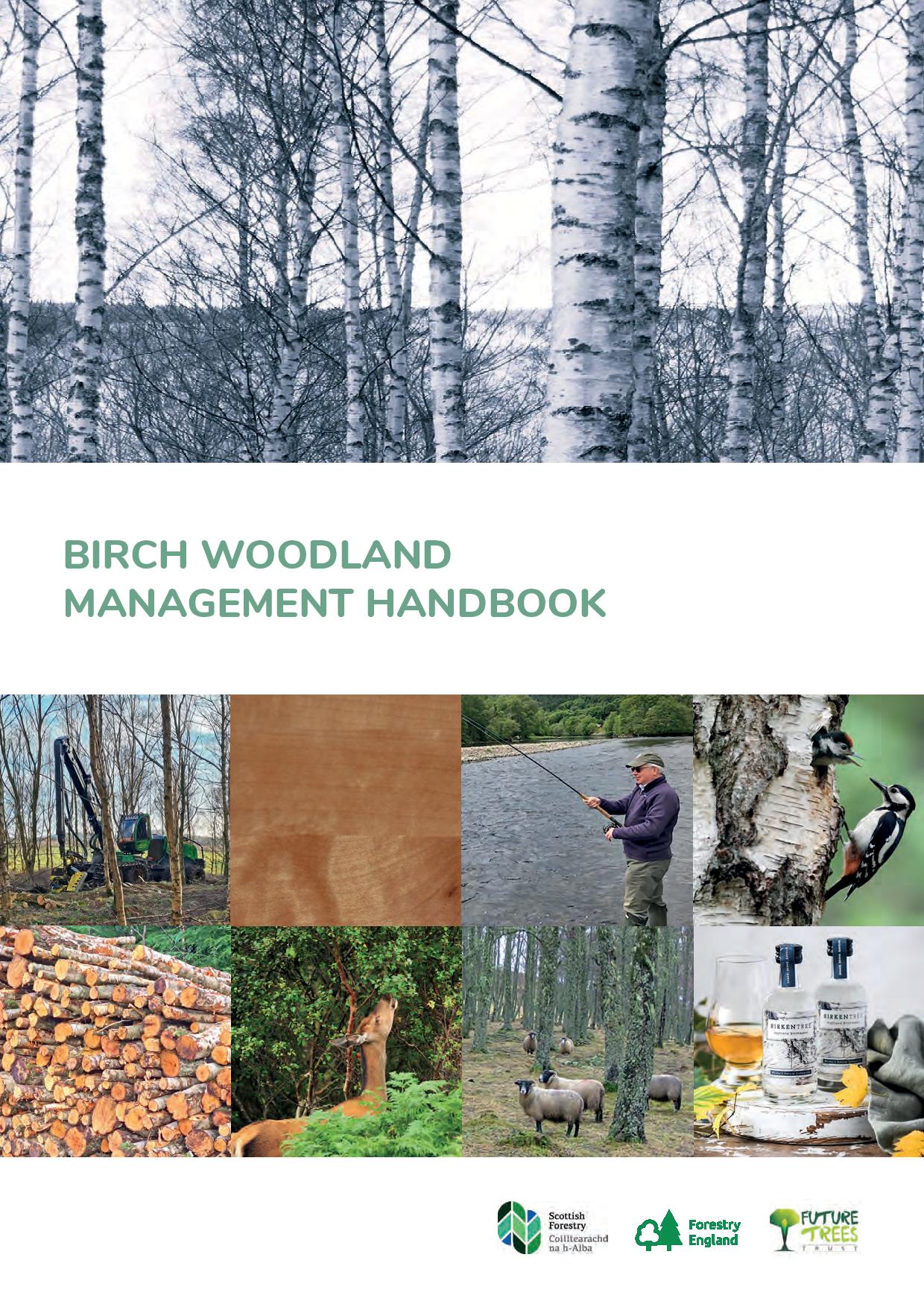Description
The aim of this handbook is to present best practice guidance on managing birch woodland, updating the first edition published in 1999. We are now in an era where no part of the UK’s woodland resource can be overlooked or underutilised, and every tree species is potentially important. Birch is the most common type of broadleaved woodland in the UK by area, and is a popular tree to plant. Recent years have seen interest in birch as a timber tree continuing to increase; across the UK managers are finding a ready market for birch firewood and this is enabling better management of formerly neglected birch woodland. We know that birch timber has good properties of strength, density and appearance, and is an excellent turning and peeling timber. Birch was an important timber in previous centuries, and, with proper management, birch could resume its place as a valuable timber resource. Planting stock of good form is now available thanks to decades of tree improvement work. What is now needed now is an era when foresters grow birch for sawlogs at a scale that enables birch to become established in hardwood timber markets.
Some foresters are finding ways to establish birch by natural regeneration in conifer forests at relatively low cost. Others are looking at quality birch as a potential substitute for tree species beset with disease problems. The use of downy birch on upland sites as a hardwood species that combines conservation, landscape and some timber benefits (biomass) has been expanding. All of this points to birch consolidating its place in forestry in the UK. This updated version of the handbook has a stronger focus on the role of birch in commercial woodland, as well as better information on appropriate seed sources, and on harvesting timber.
Birch woodland remains useful to a wide range of land managers as a component of farm woodlands, for conservation, landscape, and as fisheries habitat and cover for game; and the booklet incorporates this wide view of the usefulness of birch. Farm woodland has a growing profile in woodland creation, and a component of birch is frequently appropriate in these woods. In recent years, establishment of landscape-scale native forests and rewilding have become important and birch is a key species in these ambitious initiatives. Conservation management is now targeting montane woodland, where downy birch, juniper and montane willows can be established to recreate treeline habitats that have long been lost from the UK. In former industrial areas, birch has proven to be a useful species in site reclamation and soil improvement.
Many of the constraints that limit effective management of birch still remain, notably the small size of birchwoods, the variable form and poor access for thinning. Birch is also susceptible to damage by grey squirrel. This booklet looks at ways of trying to overcome these issues.
Interest in birch used to be largely a Scottish phenomenon, but now appears to be increasing in England and Wales. Therefore it is now time to make birch a mainstream species. All this activity needs underpinning by sharing our increasing expertise in the management of birch, which is the aim of this booklet.
Design and layout: Mamook Graphics
Technical editor: Dylan Hamilton
Copyright All rights reserved April 2023. The contents of this booklet cannot be reproduced in any form without the permission of the publisher.
Published by:
Future Trees Trust
Enquiries to be addressed to:
Future Trees Trust
Harwell Innovation Centre
173 Curie Avenue
Didcot 0X11 0QG


Reviews
There are no reviews yet.